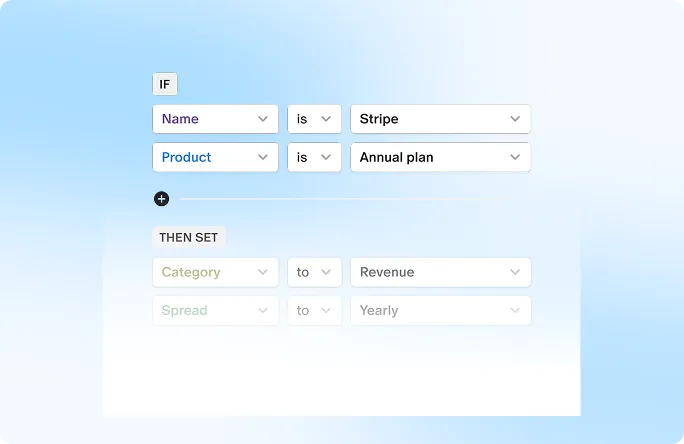Overview of Equity Instruments
Last week we reviewed all key events in the life of an employee equity award. You should now be comfortable talking about vesting and performance conditions and know that becoming a 'bad leaver' does not make you a bad person - just someone who will likely have to forfeit their unvested ESOPs. Our next step is understanding what instrument your company is using to grant you your equity award, and what difference does it make.
Receiving ESOPs does not automatically make you your company's shareholder, but in some cases it does. And at times you will never receive shares at all, even after the vesting. Confused? Let's review the common equity (and non-equity) instruments that you can expect receive as part of your ESOP award, with the help of simplified examples and calculations.
1. Options
Options are by far the most popular and common instrument for early-stage unlisted startups. How do options works? An option is a right for you to exercise (i.e. buy shares in future) at a predetermined price (called strike price, grant price or exercise price).
Simplified example: You receive 100 options at a strike price of $1. On Vesting Date, if share price is $3 you are sitting on a potential gain of $200, and you can now exercise your options at any point before the expiry (you pay 100 * $1 = $100.00 $100 to receive $300 worth of shares) - very nice. If the share price is below $1, say $0.75 you are out luck as your options are 'underwater' - there is no point in exercising to receive the shares (why would you pay $1 for something that is only worth $0.75).
Key takeaway - you don't hold shares upfront; you only have an ability to acquire them in future once your options vest. And yes, that means that you will not receive them for free (in most cases - more on that below). When you exercise, you need to pay your company the option cost in order to receive the shares. As a result, you are not guaranteed to receive financial benefit at the end, as the share price in future may be lower than the strike price on grant date. Unlimited upside potential, but you have downside risk. You may also need to plan how you will be able to pay the option cost to the company out of pocket when you exercise them.
Around the world in 80 options
Option plan design varies across the globe. In the US, you will come across Incentive Stock Options (ISOs) and Non-Qualified Stock Options (NSO/NQs), as well as ability to exercise your options early, before the vesting date. UK employees can encounter a Company Share Option Plan (CSOP). Australian employees can enjoy options granted under local ESS start-up concessions. The concept of exercise price and process of exercising we've introduced still applies - however, the tax implications, what exercise price is used as well as restrictions that can be imposed on exercising vary.
Speaking of exercise price - depending on plan design, local tax and regulatory requirements or restrictions, this can be set as nil (zero exercise price options or ZEPOs), nominal (e.g. $0.01), at a discount to fair market value (i.e. below current share price), at current share price (at the money options), or even set well above the current share price (premium priced options).
How do you know what kind of option plan you are about to join? Check the offer letter and plan documentation your employer gives you at the time of the offer.
2. RSUs aka Share Rights
The easiest way to think of Rights/RSUs (even though technically not correct) is to consider them zero exercise price options. You receive a right to a share, but you don't need to pay the option cost to receive them. As you can see, unlike options, no matter what the share price is on vesting (unless it goes to zero), your Rights/RSUs will be worth at least something.
Note: RSUs are a US concept, where they are automatically converted into shares on vesting. In other parts of the world, like Australia, Rights can be set up such that they are either automatically exercised on vesting just like RSUs, or such that employees can choose when to exercise them - just like they do with options (effectively making them ZEPOs we discussed earlier).
Rights/RSUs sounds like a great deal - why would anyone even want options with the strike price with their downside risk? Some companies actually offer you a choice to receive your ESOP award in either options or rights. However, if you are eligible for equity award, the quantity granted will generally be on a 3:1 basis. You can receive 3 times as many options as Rights/RSUs. Options can give you more upside, but come with a risk of being underwater, whereas RSUs are a 'safer' option, and as such you won't get as many of them. If you have a choice, you will need to decide what's best for your circumstances given not only your willingness, but also ability to take on more risk.
Simplified example: You receive 100 RSUs - price on the day is $1. On Vesting Date your RSUs automatically converted into 100 shares. Your holding is worth whatever the current share price is, even if the price fell from the original price of $1, your holding is worth something.
3. Performance Rights aka PSUs
Performance Rights/PSUs are exactly the same as Rights/RSUs with one big difference: your awards don't automatically vest on the respective vesting dates. As you might recall from the discussion about vesting schedules, these conditions can be based on meeting individual or company performance targets, or a certain milestone.
It's not just Rights - options, loan funded shares and other instruments could also have performance conditions attached to their vesting schedules. Always check the plan documentation.
Simplified example: You receive 100 PSUs. You earn them after 3 years if you are still employed and the performance condition is that you are able to do at least 20 push-ups on the pre-determined measurement date (often vesting date). The measurement date comes, you are still employed, and you do 30 push-ups - the 100 PSUs are all yours. If you skipped gym for 3 years and manage to do only 5 - you get nothing.
4. Loan funded shares
Australia and New Zealand's greatest contribution to the world is the abundance of its unique creatures - kangaroos, kiwi, koalas and loan funded share plans. Whilst not a truly unique concept, loan funded share plan is one of the uncommon offerings in the world of equity outside of the ANZ region. Australian loan share plans allow employees to purchase shares in a company, and in order to pay for their cost, company extends a non-recourse loan to them. This means that if the value of shares goes down below original price, employees are not on the hook. In order to access the shares, employees will need to repay the loan. To assist with the loan repayment, any dividends paid are often used to reduce the loan balance, but dividends are not common in the startup world.
There are some differences in the way New Zealand loan plans work, but we will not go through all the details in this guide.
That sounds a bit like an option plan, doesn't it? You need to pay something to receive your shares - outstanding loan amount works similar to the option cost. Kind of - but here you receive share upfront, and most importantly, loan share plans are not considered an Employee Share Scheme (ESS) for tax purposes in Australia. We will touch on tax considerations of participating in equity plans in one of the upcoming ESOP Academy editions.
Simplified example: You are offered to buy 100 shares for $100. To be able to do that, company gives you a $100 loan. Shares are subject to 3-year vesting period. After 3 years, you are free to transact on these shares, but first you must repay the $100 loan back to the company. You either repay the loan out of pocket and get the shares or sell them and $100 is deducted from the sale proceeds.
5. Phantom plans (cash-settled awards)
As you may have guessed, tax rules for ESOPs are all over the place depending what country you are in. Companies are often forced to adjust their plans to cater to local requirements. For instance, if you are joining an Australian company and will work in the Philippines or China, you may end up participating in a non-equity (cash) based phantom plan. The reason for that is that the hurdles for the company to be able to offer equity to their employees are often too high due to strict requirements from local regulators.
Fear not - wherever you are, if you are offered to join a phantom plan you still get to participate in the upside, but on vesting/exercise you won't actually be allocated shares, but will instead receive a cash payment equivalent to the value of shares you would've received. You can think of this of it as an additional cash bonus that you may receive value of which is determined by the performance of company's shares.
Simplified example: You receive 100 phantom units that mimic an option plan - price on the day is $1 which serves as a strike price for your phantom units. On Vesting Date, the share price is $3, and your phantom units are automatically exercised by the company, and you receive a cash payment of $200 from your company. At no point in time you receive shares in the company.
A common cash-settled phantom unit is called a Share/Stock Appreciation Right (SAR). In their pure form, SARs are always cash settled.
That sounds straightforward. So, how do you decide to cash-settle all your awards even if they are not phantom - that way you won't need to worry about shares and all the tax nonsense that comes with them? Unfortunately, it's usually not up to you. Plan rules often dictate that it's only up to the Board (think - the company) to decide if they wish to cash-settle equity awards. Also, this doesn't happen too often. If a company cash settles their equity awards too often, there can be implications for an employee share trust company has set up to help administer the ESOP (if they use one), and accounting reporting they have to do. These considerations may not have direct impact on you, but important things for the company to consider.
Tip: open the plan documentation and CTRL+F 'cash' to see if there is a clause in the plan rules stating that the awards may or will be settled in cash.
Remember how SARs that are always cash settled? And the fact that you don't get to decide if your ESOPs are equity or cash settled? Well, let me introduce you to Tandem SARs that break both of these 'rules'. If you receive Tandem SARs, you get a standard SAR, and in conjunction you also get an equity instrument like an option. Award is double in value? Not quite - when you choose to exercise your Tandem SARs, you decide whether you want to exercise either the SAR component or the options - but never both. Tandem SARs give you a choice of cash or equity.
Other plans
ESOP design and the range of instruments used around the world doesn't stop there. However, we will leave it at that for the purpose of this guide. In the listed environment, large companies often roll out employee share purchase plans (ESPP). These are uncommon in the startup world, but ESOP Academy will still cover them in one of the future editions. In the meantime, if you are keen to understand how ESOPs work in further detail - don't hesitate to reach out.
What's next?
ESOPs appear attractive - you get an award from your employer, stick around for the vesting period, your ESOPs vest and you receive a financial benefit after transacting. Sounds too good to be true - what's the catch? In the next two editions, we will highlight the risks and caveats of ESOPs, and explore the key tax considerations you need to keep in mind to ensure you are well prepared for all the ups and downs that you may encounter as an ESOP holder.
Next week: ESOP Academy #4: ESOPs sound great! What's the catch?
Stay tuned: ESOP Academy #5: Tax considerations


 Equity management
Equity management

 Fund management
Fund management

 Fund management
Fund management

 Fund management
Fund management






































